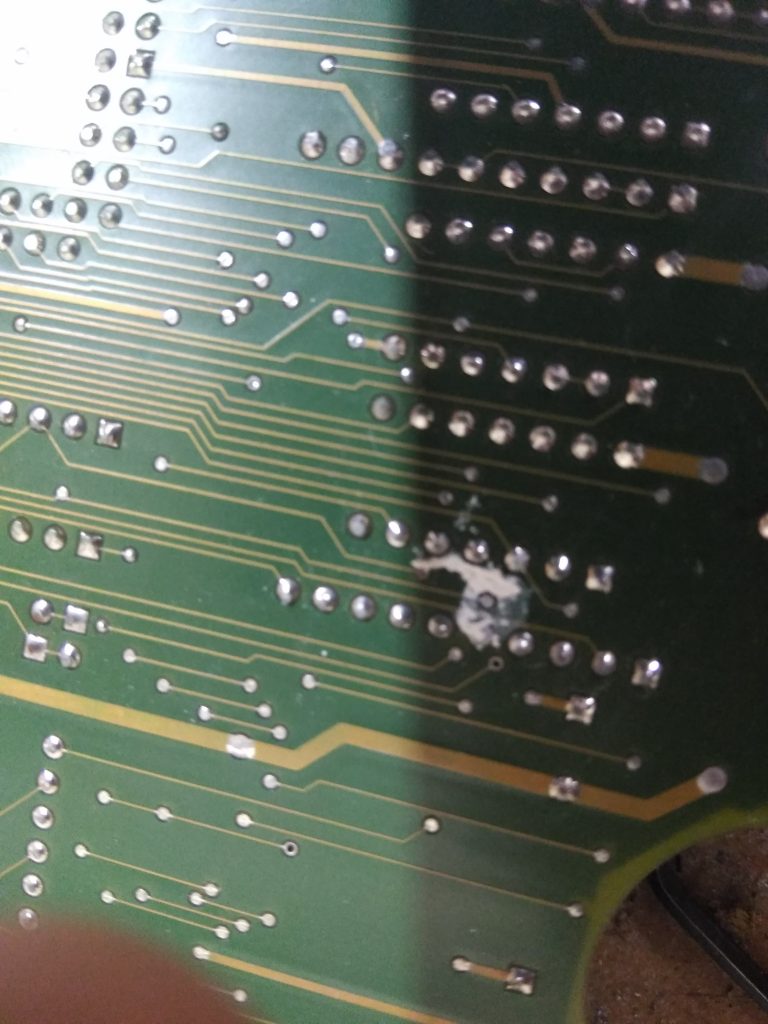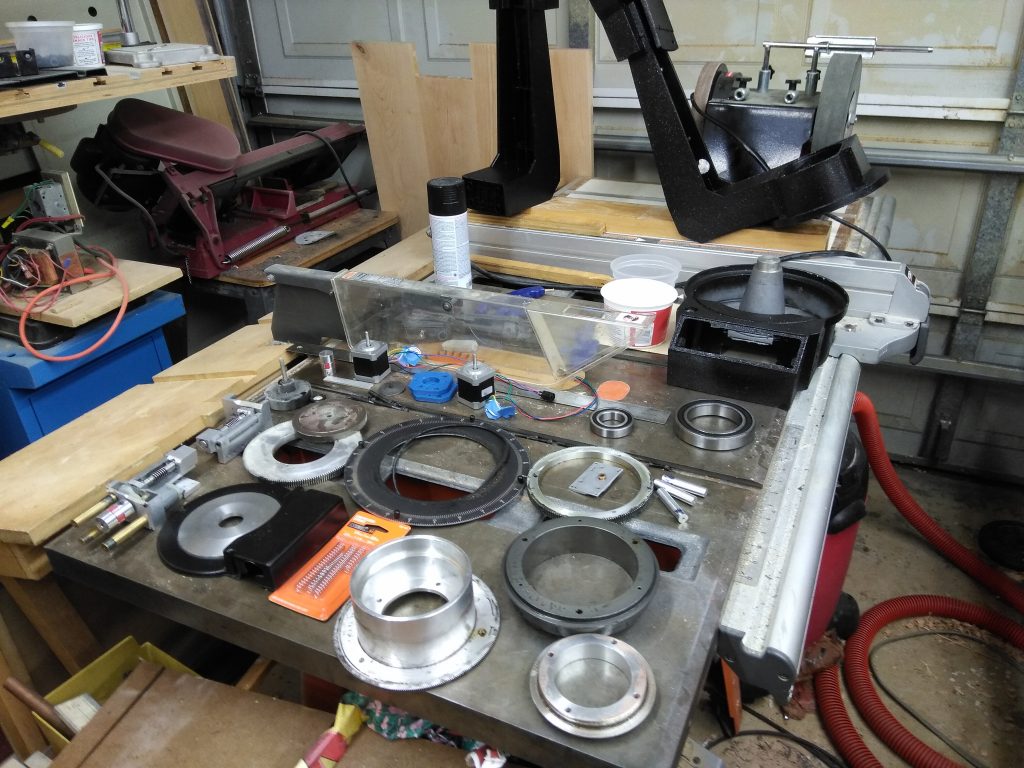This is a Mead LX-200 “Classic” telescope that had some issues when I got it:
- The hand controller was missing
- The power supply had some blown tantalum capacitors
- The focuser knob was jammed and mirror would not move
- The secondary mirror had a large visible spec of dirt on it
- Something was rattling around inside the OTA (Optical Tube Assembly)
- The fork arms had blistering paint and significant corrosion of the aluminum
I decided to disassemble the scope to see if I could repair the mechanical issues. Obviously the OTA had been disassembled before. I only had to remove one of the fork arms from the mount to remove the OTA from the fork. My initial thought was that the primary mirror would come out the back of the OTA. This was incorrect. Thanks to MAPUG Astronomy Topical Archive I found the instructions to remove the primary mirror.
http://www.skymtn.com/mapug-astronomy/MAPUG/MirrorRm.htm
Simplified: The scope should be positioned horizontally so nothing falls on the mirrors. The mirror comes out the front of the OTA. The focuser mechanism is removed first from the back of the OTA. Then the corrector plate and secondary mirror assembly are removed from the front – note the alignment marks – if they are not there add them (one of the cork pads was missing from the corrector support ring). Then a clip on the front of the baffle tube is removed. Then the primary mirror assembly can be slid off the baffle tube. Since the mirror is larger than the corrector support ring there are slots milled into the ring that allow the mirror (rotate 90 degrees) to very carefully slide through.
The grease on the baffle tube was like tar. It took a lot of effort to slide the mirror off of the tube. I cleaned all the old grease off the outside of the baffle tube and the inside of the mirror assembly. I greased the tube with some grey automotive bearing grease I had. The mirror now glides slowly down the baffle tube by gravity (slip fit no slop) there should be no noticeable mirror flop. I did not clean the primary mirror – it had no visible dust or dirt. I cleaned of the shmutz (technical term) from the secondary mirror (how in the world did it get there inside a sealed OTA?).
I did not remove the primary mirror from its mounting as the corrector plate is aligned with the primary mirror at the factory and I did not want to risk disturbing this.
The focuser had been modified by someone. They installed two springs separated by a washer inside the OTA on the threaded focuser link and added a keeper on the pin to keep the link from sliding off of the pin. I believe the idea was to remove the backlash from the focuser knob. The keeper had slipped off of the pin (this was the rattle in the OTA) and the link was jammed on the end of the pin. This was obviously a bad idea. I removed all that from the focuser. Without the spring on the link the link stays nicely centered on the pin. I did find a way to eliminate backlash using an external spring on a screw that is screwed into the locking hole in the mirror mount located near the focuser. I got this idea from ScopeStuff.com http://scopestuff.com/ss_msta.htm
The fork arms were blasted with walnut shells using a homemade blasting mechanism and painted with spray paint called “galaxy” (how could I resist?).
For the electronics I decided to build my own controller for the telescope. I found the OnStep telescope controller project.
https://groups.io/g/onstep/wiki/Home
I built the “max pcb” version of this controller along with the “smart hand controller”. Both cases for the controllers were 3D printed. Used NEMA 17 stepper motors to drive the existing worm gear assemblies. The springs used to engage the worm to the gear were changed to stronger springs as they needed to support the weight of the new steppers. The controller has all the planets, Messier objects, brighter stars, and the Herschel 400 catalog objects. This is sufficient for the public outreach that this scope will be used for.
The finished scope is providing excellent views – tracking is superb. I usually set up the scope for public viewing at Fox Observatory in Markham Park in Sunrise, FL. on most clear Saturday nights from dusk to midnight. Feel free to come and look.
This is the astronomy club that operates Fox Observatory: South Florida Amateur Astronomers Association

controller 


corrector alignment 

slot to remove primary 
cleaned seconday 
focuser parts 
azimuth gear 
stepper assembly 
printed stepper mount 
worm assembly 

removed stuff 
factory oops? 


walnut blasting 

steppers 
milling for standoffs 


how does this go together? 
little pieces 

“galaxy” paint


























